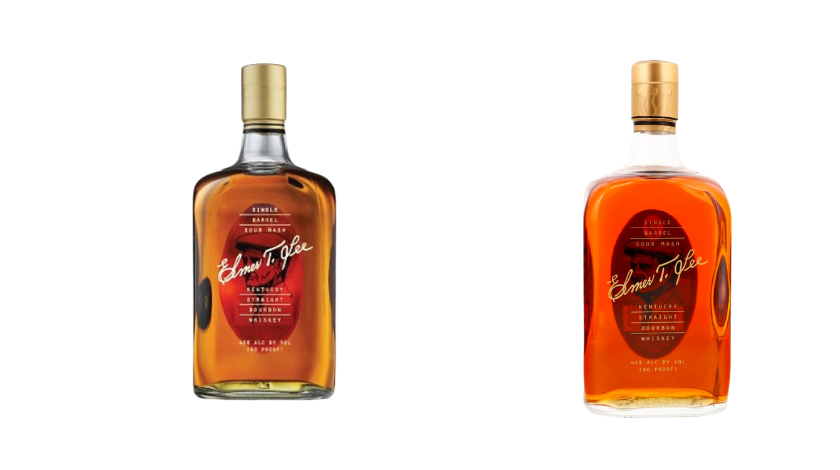If you’ve spent any time around bourbon lovers, you’ve probably heard the name Elmer T. Lee spoken with genuine respect. It’s not just a bottle—it’s a story. This bourbon represents one of the most respected figures in the whiskey world and his lifelong dedication to craftsmanship.
Elmer T. Lee is more than a brand. It’s the legacy of a man who helped shape modern bourbon as we know it. The bourbon that bears his name has become one of the most sought-after bottles on the market, admired for its balance, flavor, and history. In this guide, we’ll look at who Elmer T. Lee was, what makes his bourbon so special, how it tastes, how to drink it, and whether it’s really worth the price people pay for it today.
1. Who Was Elmer T. Lee?
1.1 Early Life and Background
Elmer T. Lee was born in 1919 in Kentucky—a fitting birthplace for someone destined to become one of the most influential names in American whiskey. After serving in World War II as a radar engineer, Lee returned home and completed his education at the University of Kentucky, where he earned an engineering degree.
In 1949, he joined what was then known as George T. Stagg Distillery, which would later become Buffalo Trace Distillery. His first job wasn’t glamorous. He started as a maintenance engineer, working his way up through hard work, curiosity, and an obvious passion for quality.
1.2 Rise at Buffalo Trace
Lee’s technical mind and deep respect for tradition made him stand out. By 1960, he became Master Distiller, responsible for overseeing the entire production process. He wasn’t content with doing things the usual way. He paid close attention to how temperature, aging, and barrel selection influenced taste.
He spent hours tasting samples, studying how each barrel developed differently. Over time, this hands-on curiosity led to a simple but revolutionary idea—bottling bourbon from a single barrel instead of blending multiple barrels together. It seems normal now, but at the time, no one had done it.
1.3 The Single Barrel Revolution
In 1984, Elmer T. Lee introduced the world’s first commercially available single-barrel bourbon: Blanton’s Single Barrel. It was named after his mentor, Colonel Albert B. Blanton. This release changed bourbon forever, helping push the drink into a premium category and showing that American whiskey could be just as refined and collectible as Scotch.
After retiring in 1985, the distillery honored him with a bourbon carrying his own name—Elmer T. Lee Single Barrel. It became a tribute not only to his skill but also to his personal taste in whiskey: smooth, flavorful, and elegant.
1.4 Legacy and Recognition
Elmer T. Lee passed away in 2013, but his impact still shapes the industry. Buffalo Trace and the wider bourbon community remember him as a humble, dedicated craftsman. He was inducted into the Kentucky Bourbon Hall of Fame and received multiple lifetime achievement awards.
Ask any distiller today, and you’ll hear that Elmer wasn’t just making bourbon—he was setting a standard for how it should be made.
Read Also: Don’t challenge the lady billionaire
2. What Is Elmer T. Lee Bourbon?
2.1 The Basics
Elmer T. Lee Single Barrel Bourbon is made by Buffalo Trace Distillery in Frankfort, Kentucky. It’s a single-barrel bourbon, meaning each bottle comes from one carefully chosen barrel rather than a blend.
It’s bottled at 90 proof (45% ABV), which gives it enough strength to highlight the flavors without overwhelming the drinker. There’s no age statement, but it’s generally believed to be around 8–9 years old, based on industry knowledge and Buffalo Trace’s aging practices.
2.2 Mash Bill and Ingredients
Buffalo Trace doesn’t publicly release exact mash bills, but Elmer T. Lee is believed to use Mash Bill #2, the same used in Blanton’s. It has a higher rye content than many bourbons—about 12–15% rye, along with corn and malted barley.
That touch of rye gives the bourbon a subtle spice and depth that balances the sweetness of the corn. You’ll notice hints of caramel, vanilla, and honey with just enough peppery warmth to make each sip interesting.
2.3 Production and Barrel Selection
Each barrel used for Elmer T. Lee is selected by hand. The barrels typically come from the middle levels of the rickhouse, where temperature fluctuations are ideal for even aging.
This placement creates a balance between sweetness and spice. Too high in the rickhouse and the bourbon might age too quickly. Too low, and it might develop slower and remain overly woody. Elmer T. Lee’s selection sits right in that sweet spot.
2.4 Release and Availability
Elmer T. Lee is released in small quantities, usually once or twice a year, which explains why it’s so hard to find. Buffalo Trace doesn’t mass-produce this bourbon, and demand often exceeds supply.
On retail shelves, the suggested price is around $40–$50, but on the secondary market, it can reach several hundred dollars, depending on the year and condition of the bottle.
3. Tasting Elmer T. Lee: A Detailed Review
Let’s talk about the fun part—how it tastes.
3.1 Appearance
Pour a glass and you’ll see a deep amber color, slightly golden at the edges. It looks rich, almost like honey catching sunlight.
3.2 Nose (Aroma)
The first thing you’ll smell is a wave of caramel, vanilla, and sweet corn, followed by notes of ripe fruit, toffee, and toasted oak. With a bit of time, gentle floral and spice notes appear—cinnamon, nutmeg, and a hint of orange peel.
3.3 Palate (Taste)
The flavor opens with sweet brown sugar and maple syrup, then transitions into ripe fruit, baking spice, and oak. The rye content gives it a little spice kick, but it’s never sharp or harsh. Everything feels smooth and balanced.
There’s a creamy texture that coats the mouth, and the oak influence adds a mature depth without tasting bitter.
3.4 Finish
The finish is medium to long, warm but not hot. You’ll get lingering flavors of vanilla, leather, and a faint hint of dark cherry. It’s the kind of finish that makes you pause for a moment before taking another sip.
3.5 My Personal Take
If you’ve ever had Blanton’s, imagine that with slightly more warmth and a smoother edge. I find Elmer T. Lee a bit more versatile—it works neat, on the rocks, or even in an Old Fashioned if you want to be indulgent.
It’s one of those bourbons that feels classy without being showy.
4. How to Drink, Taste, and Enjoy Elmer T. Lee
4.1 Glassware and Temperature
For neat tasting, use a Glencairn glass or any tulip-shaped whiskey glass. These shapes help concentrate the aromas. If you prefer a little dilution, add a small ice cube or a few drops of water to open up the flavors.
Serve it at room temperature or slightly cooler. Too much chill mutes the aromas.
4.2 Tasting Tips
-
Look at the color—this shows the aging and wood interaction.
-
Swirl gently and smell before tasting.
-
Take small sips to explore each layer—sweet, spicy, woody.
-
Exhale after swallowing; this brings out new notes.
4.3 Food Pairings
Elmer T. Lee pairs beautifully with grilled meats, aged cheese, or dark chocolate. Personally, I like it with a medium-rare steak or smoked almonds. The bourbon’s caramel and spice notes balance savory and salty flavors perfectly.
4.4 When to Enjoy It
It’s great as a celebratory pour—a birthday, promotion, or quiet night with friends. Many collectors open their bottles on meaningful occasions because it feels like sharing a piece of bourbon history.
5. Buying and Price Guide
5.1 Retail Price
Officially, Elmer T. Lee’s retail price hovers around $45. But the problem is finding it at that price. Many liquor stores sell it via lotteries or have long waiting lists.
5.2 Market and Secondary Price
On the secondary market, prices often jump to $250–$500, depending on region and demand. Limited releases or older bottlings can fetch even more. Whether it’s worth paying that much depends on what you value more—taste or collectibility.
5.3 Where to Buy
Try:
-
Local specialty liquor stores
-
State-run lotteries (in controlled states)
-
Online marketplaces like Drizly or Caskers (when in stock)
-
Bourbon trading communities (for experienced buyers)
Always check for authenticity—fake bottles have appeared in the market.
5.4 Elmer T. Lee vs Other Bourbons
| Bourbon | Proof | Profile | Price | Key Difference |
|---|---|---|---|---|
| Elmer T. Lee | 90 | Sweet & balanced | ~$45 | Single barrel; smooth finish |
| Blanton’s | 93 | Bold & spicy | ~$65 | Slightly higher proof; more oak |
| Eagle Rare | 90 | Lighter, floral | ~$40 | Longer finish but less spice |
| Four Roses Single Barrel | 100 | Fruity & strong | ~$50 | More floral, higher proof |
Elmer sits comfortably in the middle: approachable, elegant, and flavorful.
6. For Collectors and Investors
6.1 Value and Rarity
Because of its limited release, Elmer T. Lee has become both a drinker’s favorite and a collector’s item. Older bottles—especially those from the 1990s or early 2000s—can command high prices among enthusiasts.
6.2 Special Editions
There are a few commemorative releases, such as:
-
Elmer T. Lee 100-Year Tribute Edition (2019) – celebrating what would have been his 100th birthday. Bottled at 100 proof, richer in flavor.
-
Elmer T. Lee Commemorative Bottlings – rare and highly collectible.
6.3 Storage Tips
Keep your bottle upright, away from sunlight and temperature swings. Ideal temperature: 15–20°C (59–68°F). If you open it, try to finish within 1–2 years to preserve flavor.
7. Pros, Cons, and Final Thoughts
7.1 What Makes It Great
-
Beautifully balanced flavor
-
Affordable retail price (if found)
-
Rich history and connection to a bourbon legend
-
Smooth and versatile—easy to enjoy neat or with ice
7.2 What to Watch Out For
-
Very limited availability
-
High secondary market prices
-
Some batch variation (since it’s single barrel)
7.3 My Verdict
If you’re lucky enough to find a bottle at retail price, buy it without hesitation. It’s one of those bourbons that honors tradition while still feeling timeless. It’s not about hype; it’s about craftsmanship.
Drinking Elmer T. Lee feels like sharing a quiet toast with one of the men who built bourbon’s modern reputation.
8. Frequently Asked Questions
1. What is Elmer T. Lee bourbon?
A single-barrel bourbon made by Buffalo Trace, bottled at 90 proof, and named after the legendary distiller who introduced single-barrel bourbon to the world.
2. How old is it?
No official age statement, but generally estimated to be around 8–9 years old.
3. What’s the mash bill?
Likely Buffalo Trace’s Mash Bill #2—corn, rye (12–15%), and malted barley.
4. Is Elmer T. Lee worth it?
Yes, if bought near retail. It offers exceptional quality and history for its price range.
5. How does it compare to Blanton’s?
Elmer T. Lee is slightly smoother and more balanced, while Blanton’s is a bit spicier and oakier.
6. Can I mix it in cocktails?
You can, but most enthusiasts prefer to sip it neat or with a small splash of water.
7. Why is it so hard to find?
Limited production and huge demand. Buffalo Trace allocates small amounts to distributors each year.
Conclusion
Elmer T. Lee bourbon isn’t just about taste—it’s about legacy. Every pour carries the story of a man who changed the bourbon world through patience, innovation, and respect for tradition.
It’s a whiskey that rewards slow appreciation. You don’t just drink it—you experience it. Whether you’re a new bourbon fan or a seasoned collector, Elmer T. Lee reminds you that the best bottles aren’t defined by price or hype, but by craftsmanship and passion.




